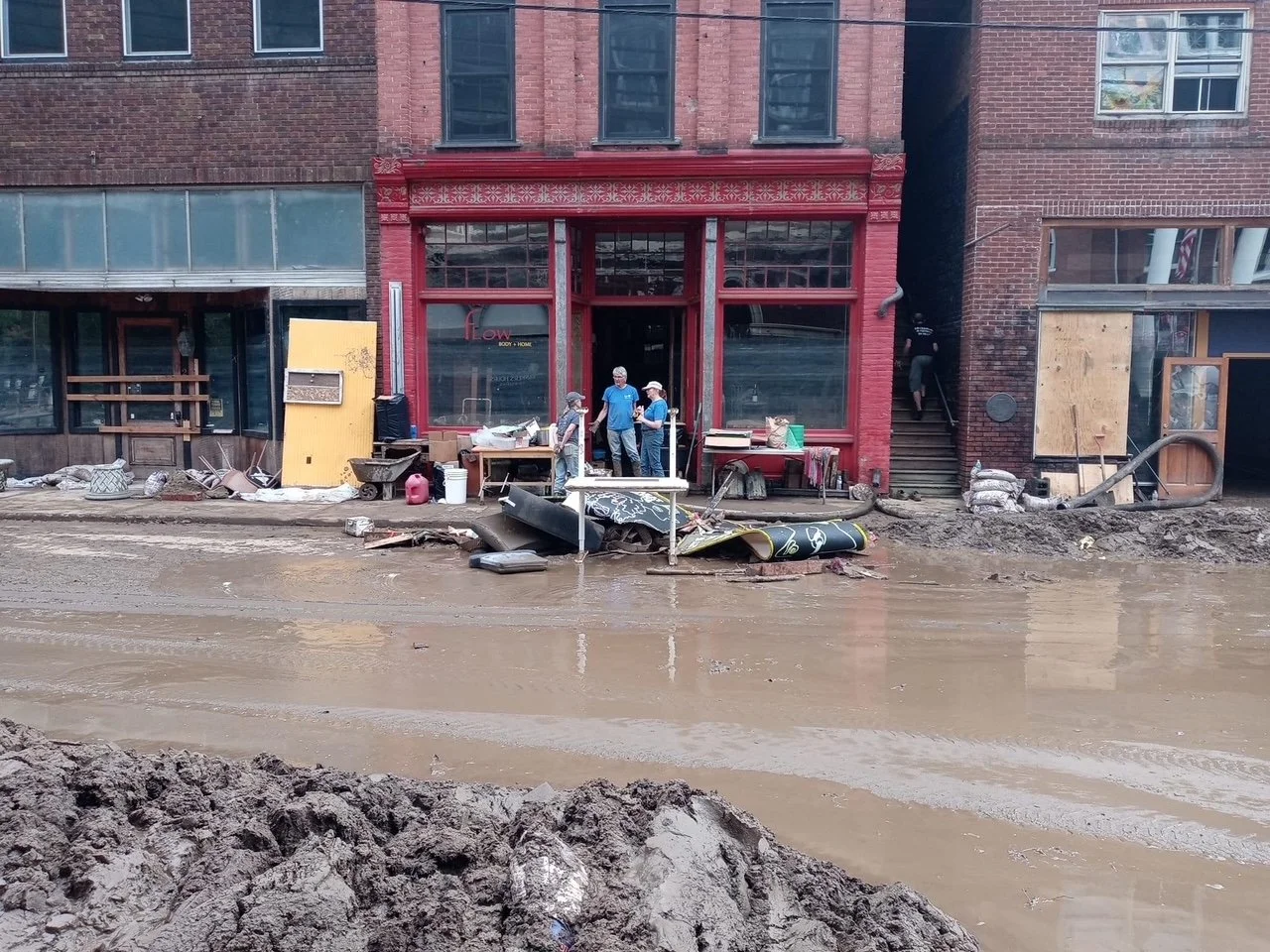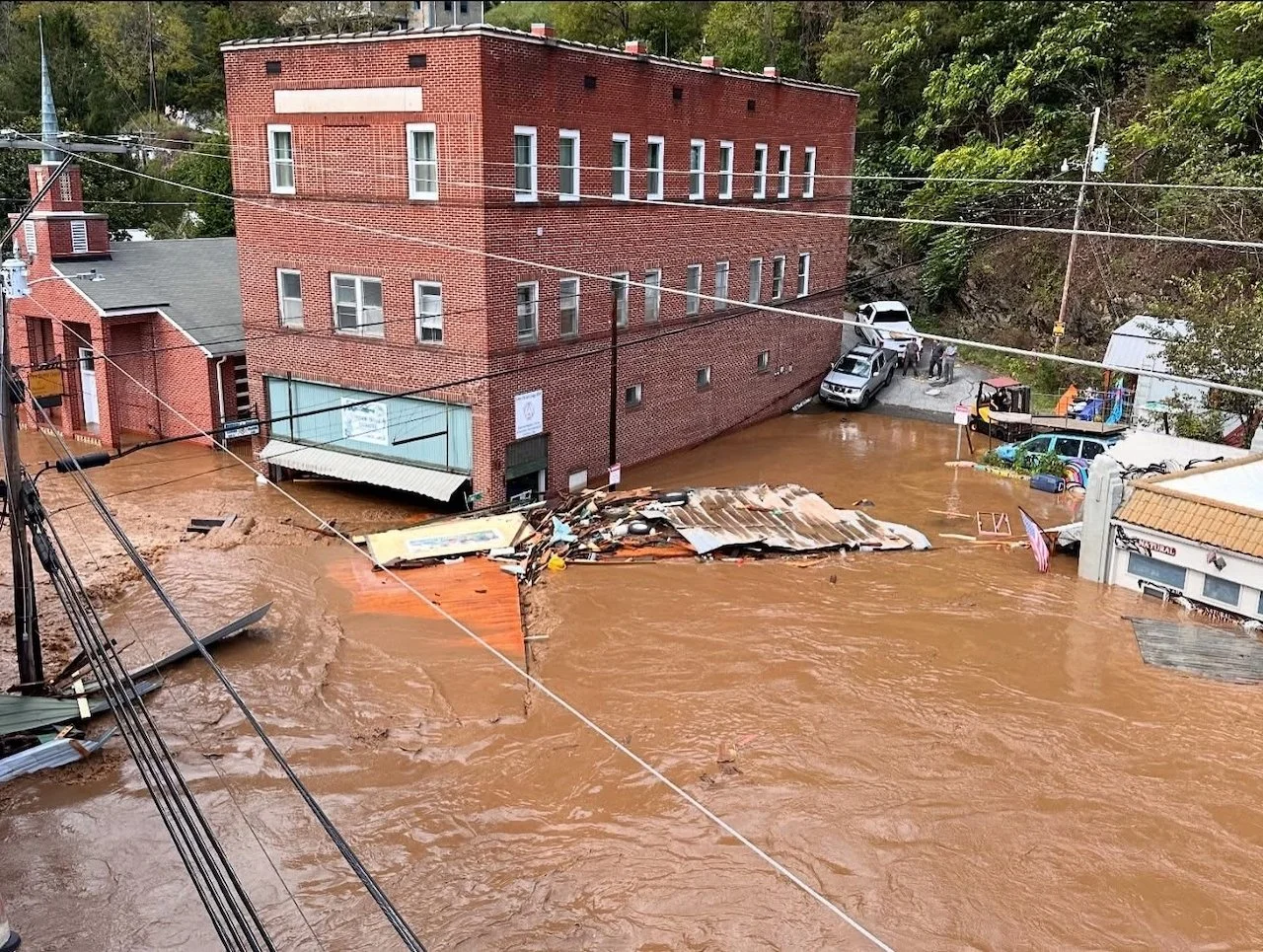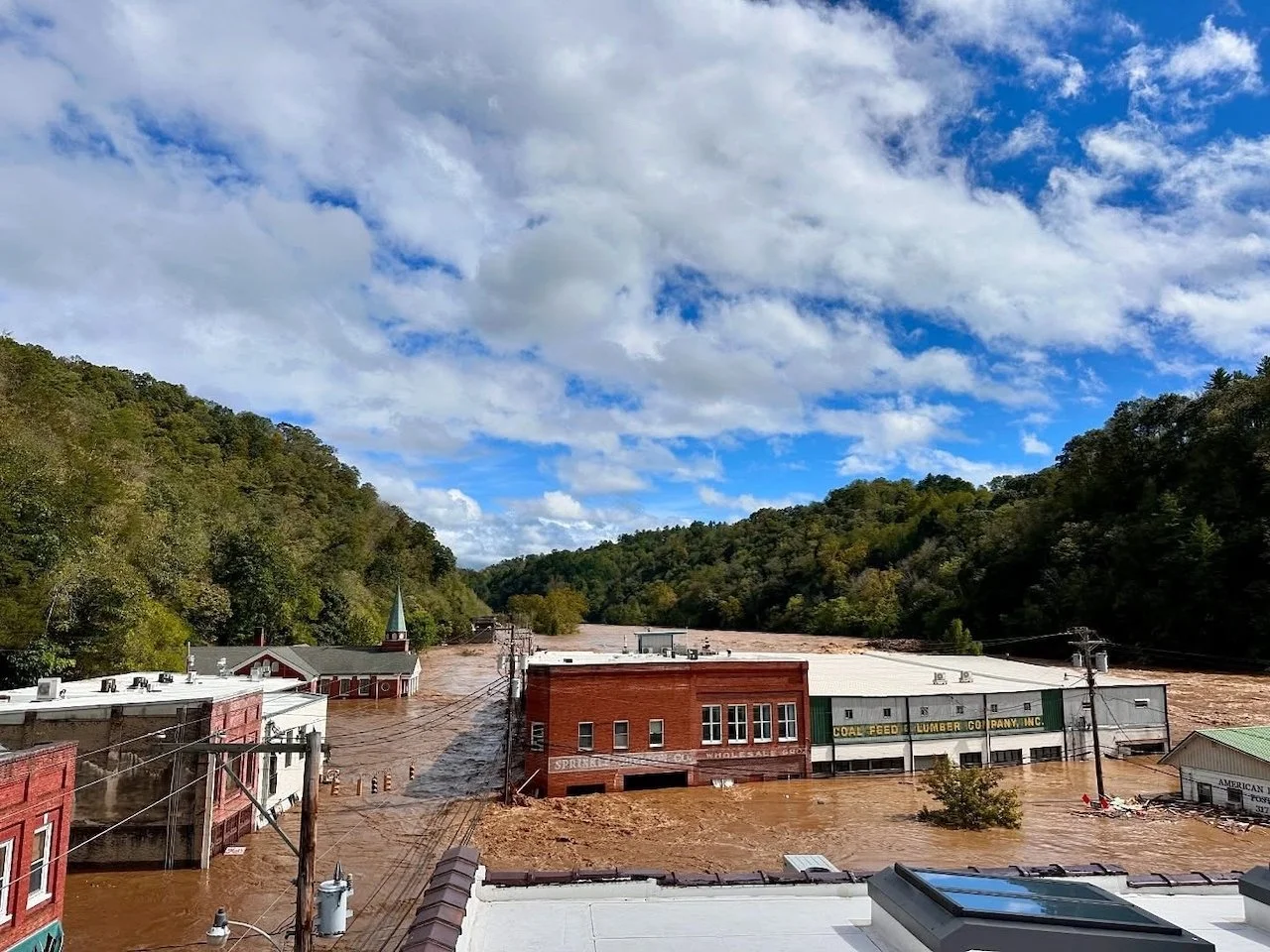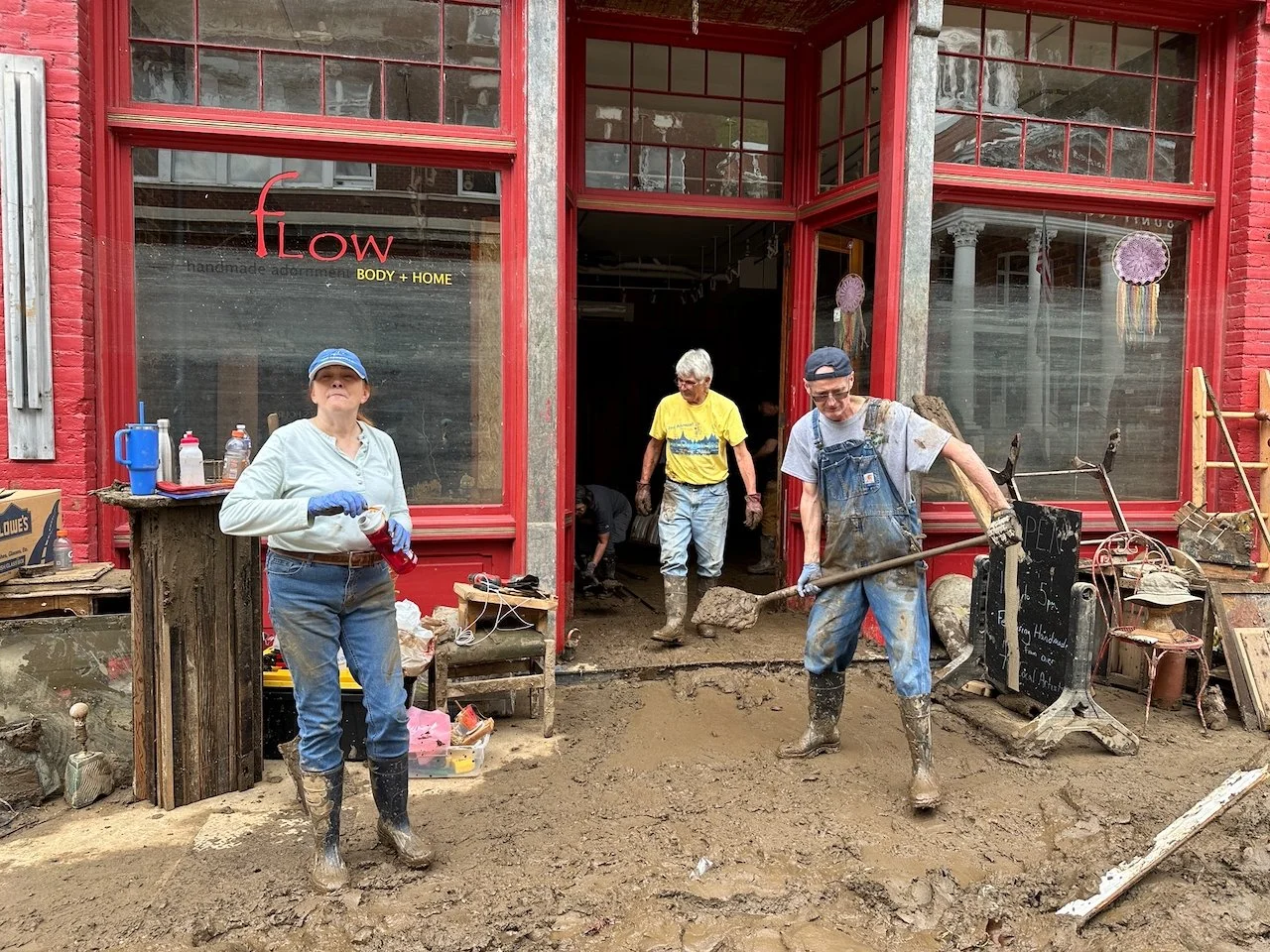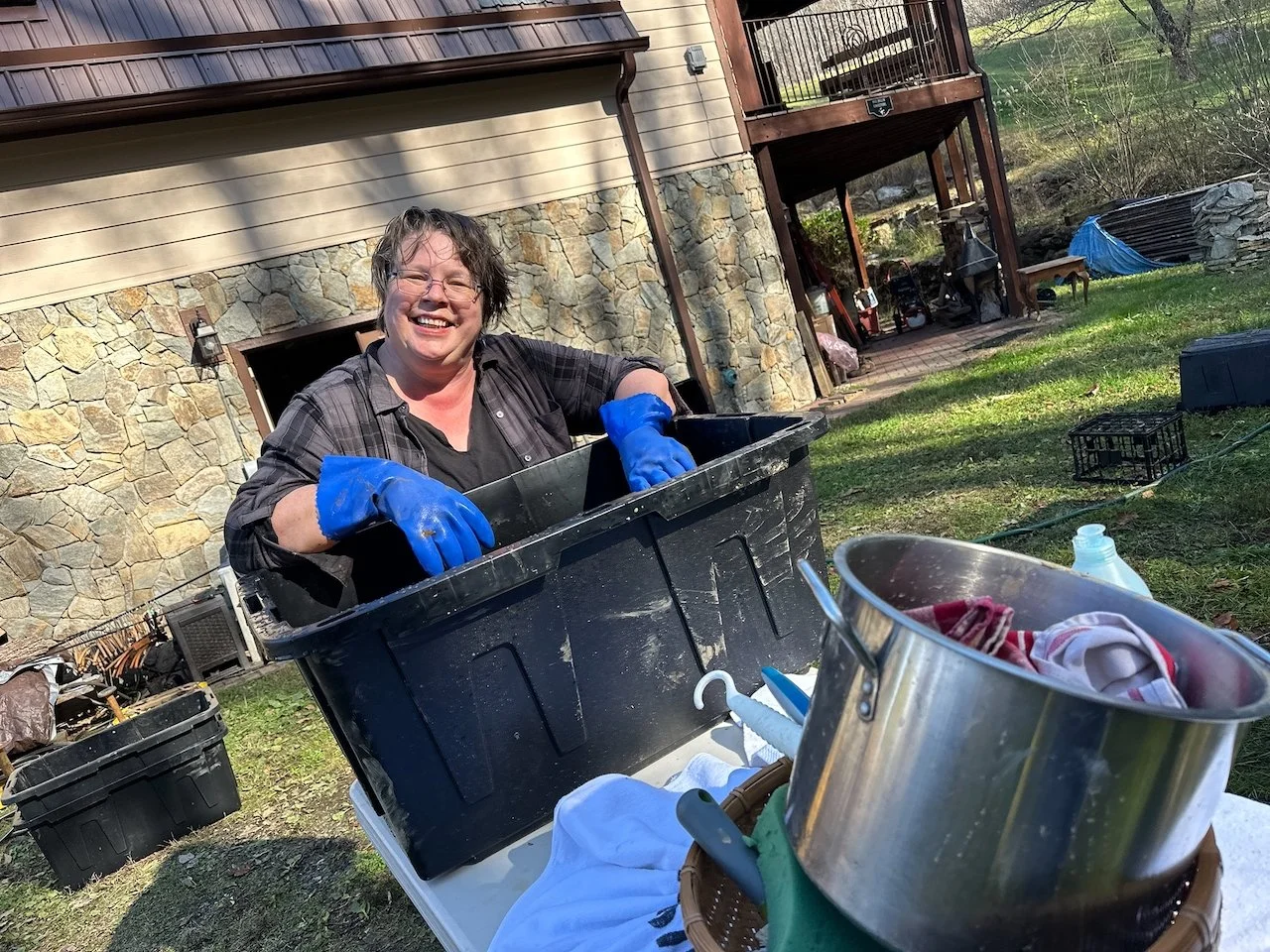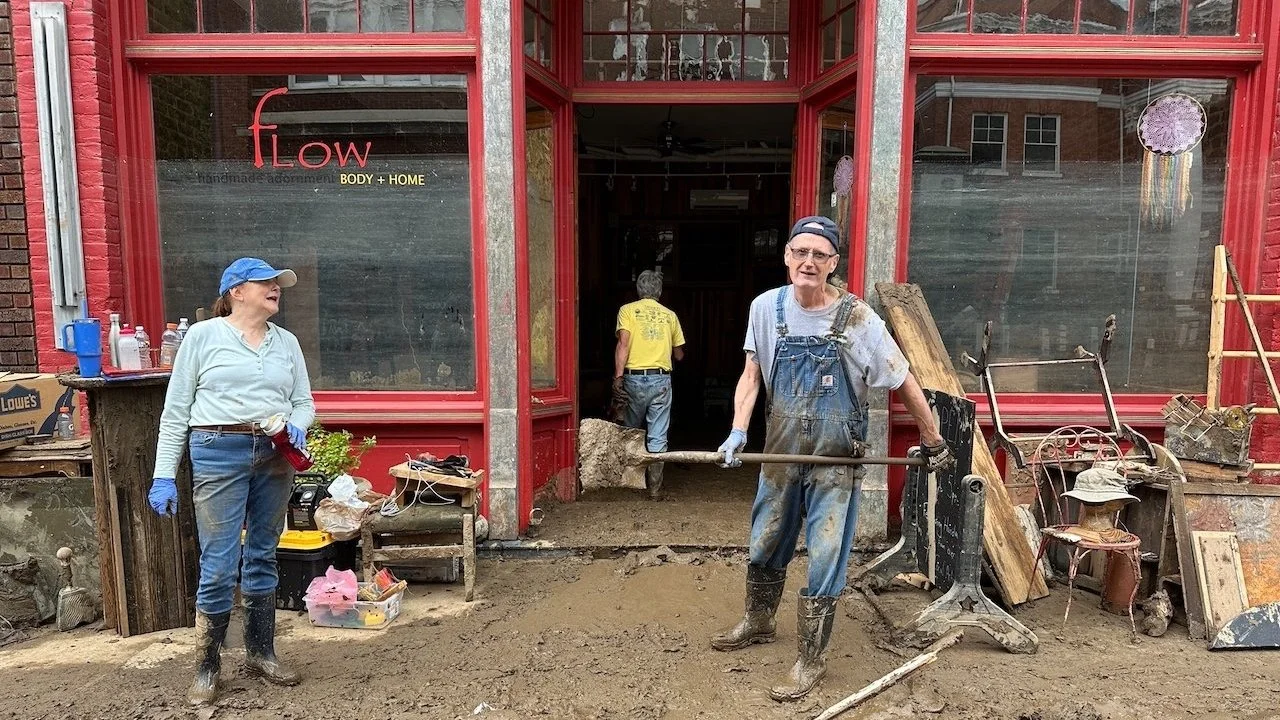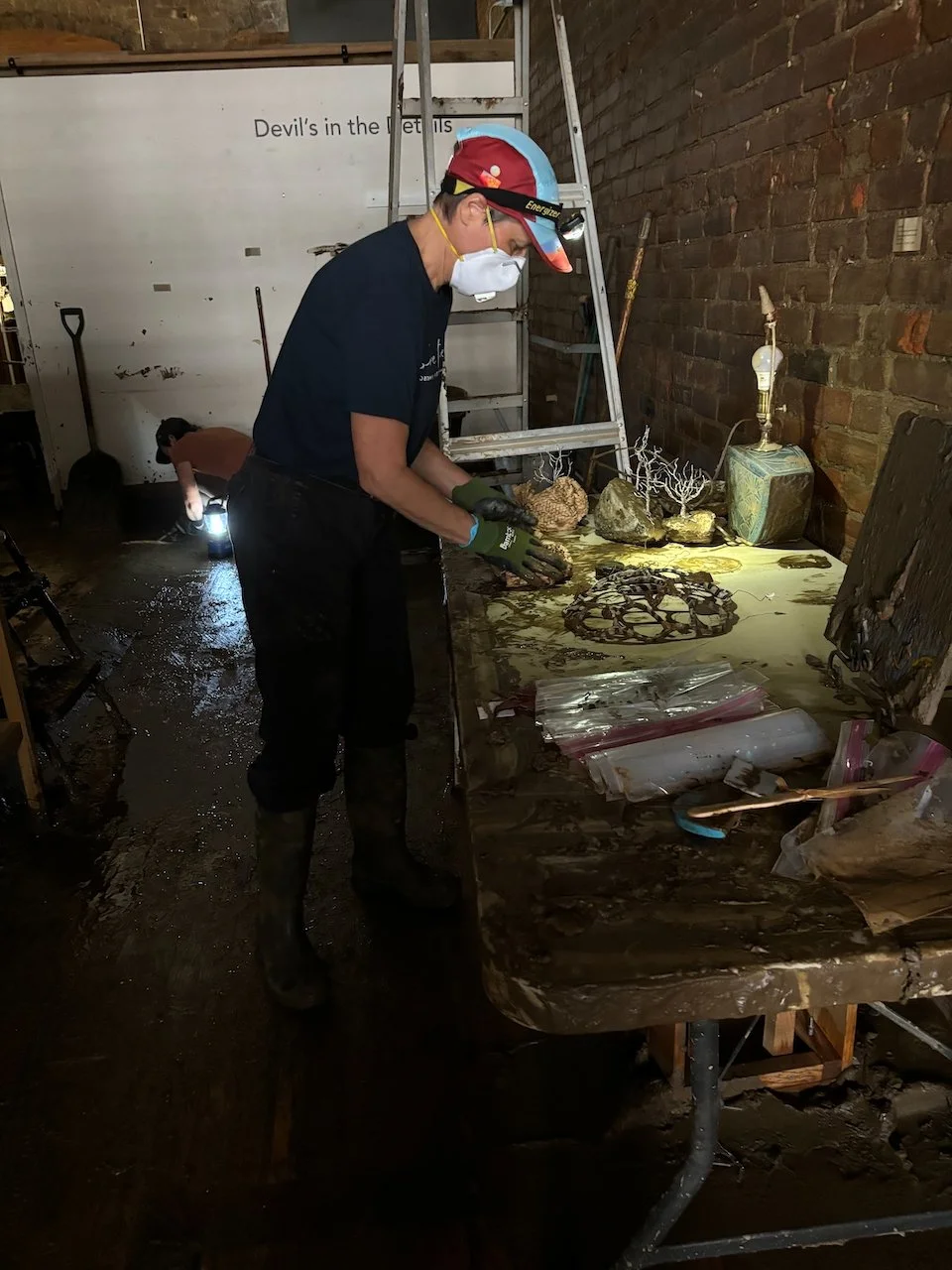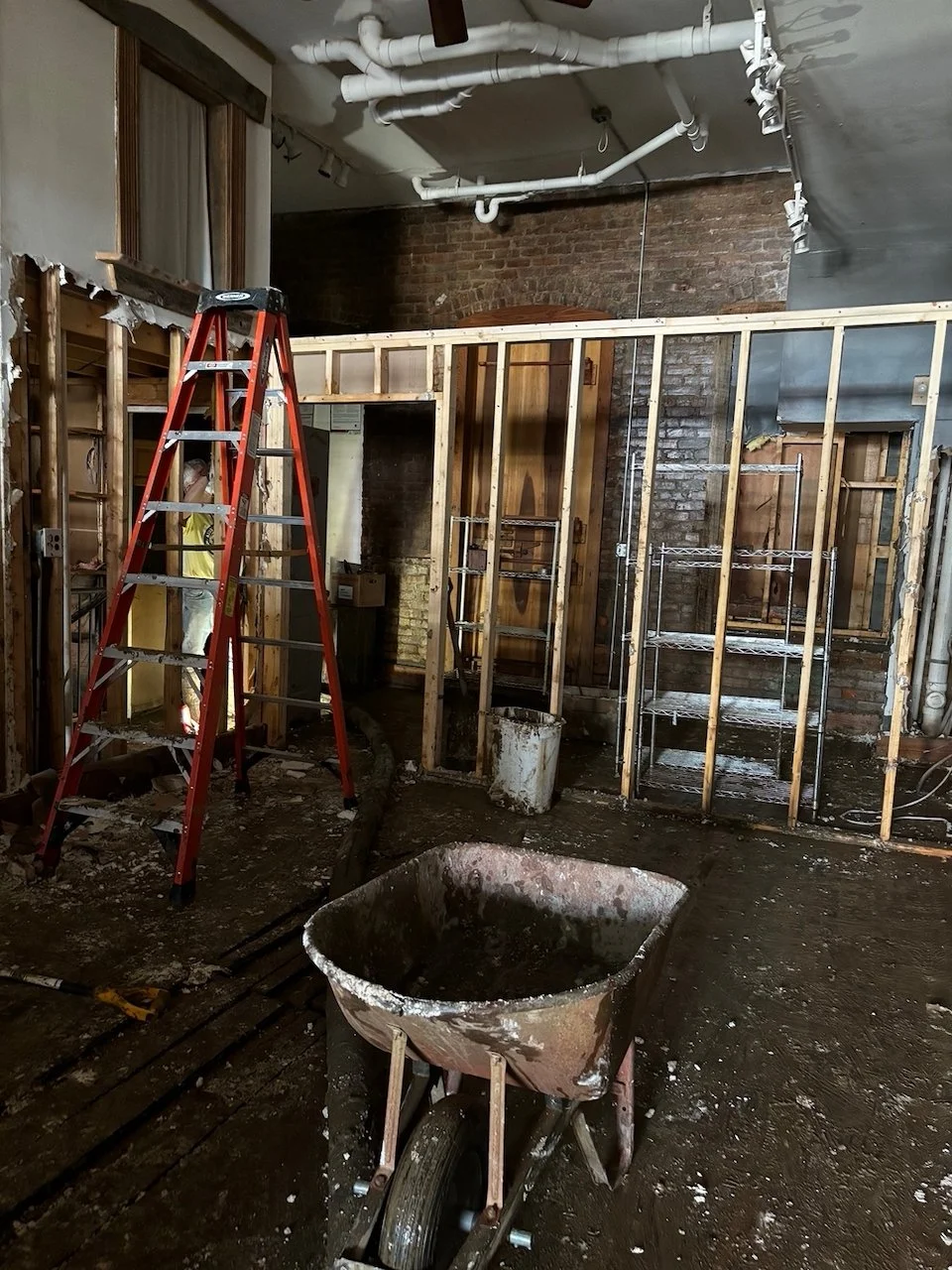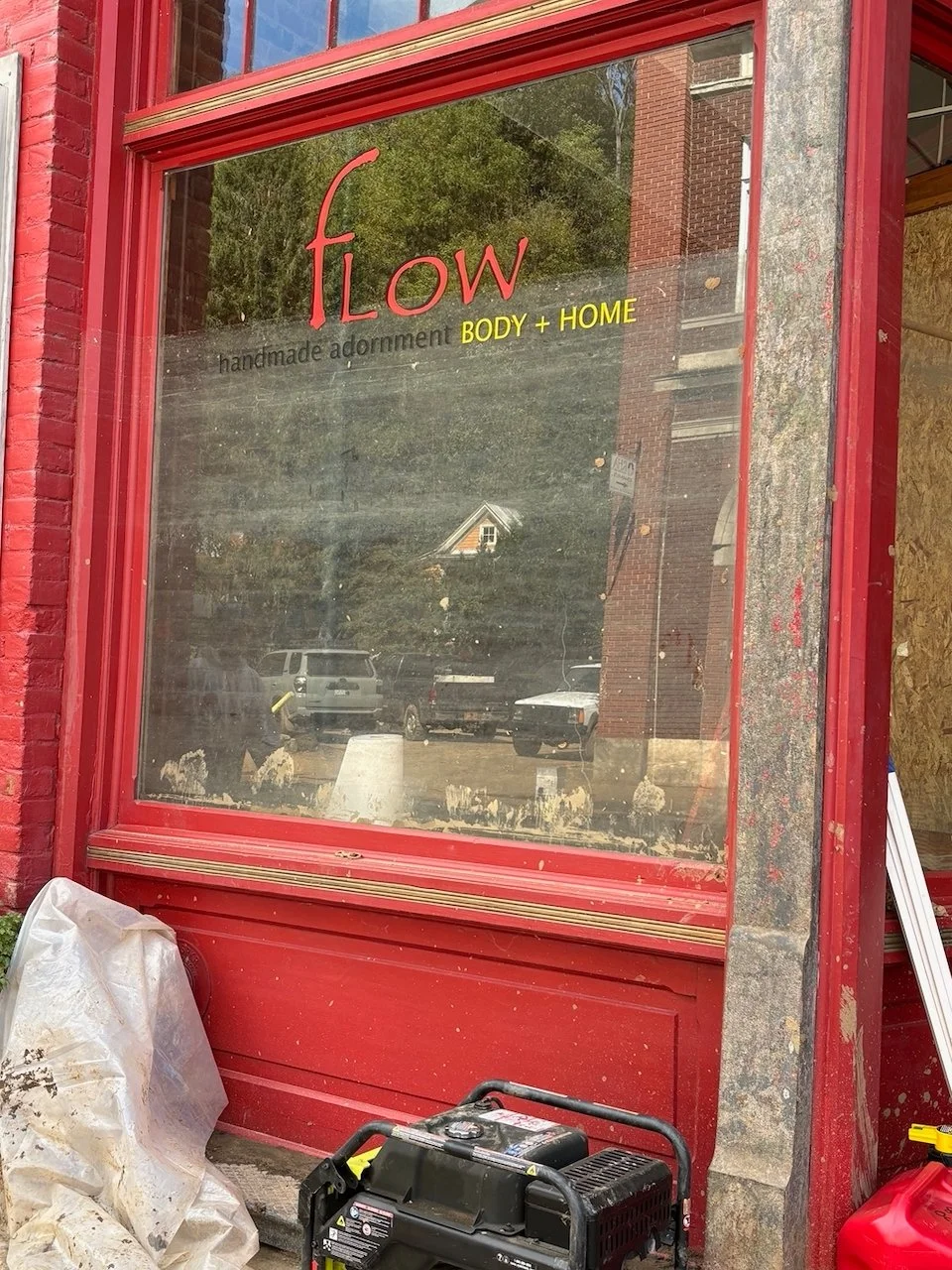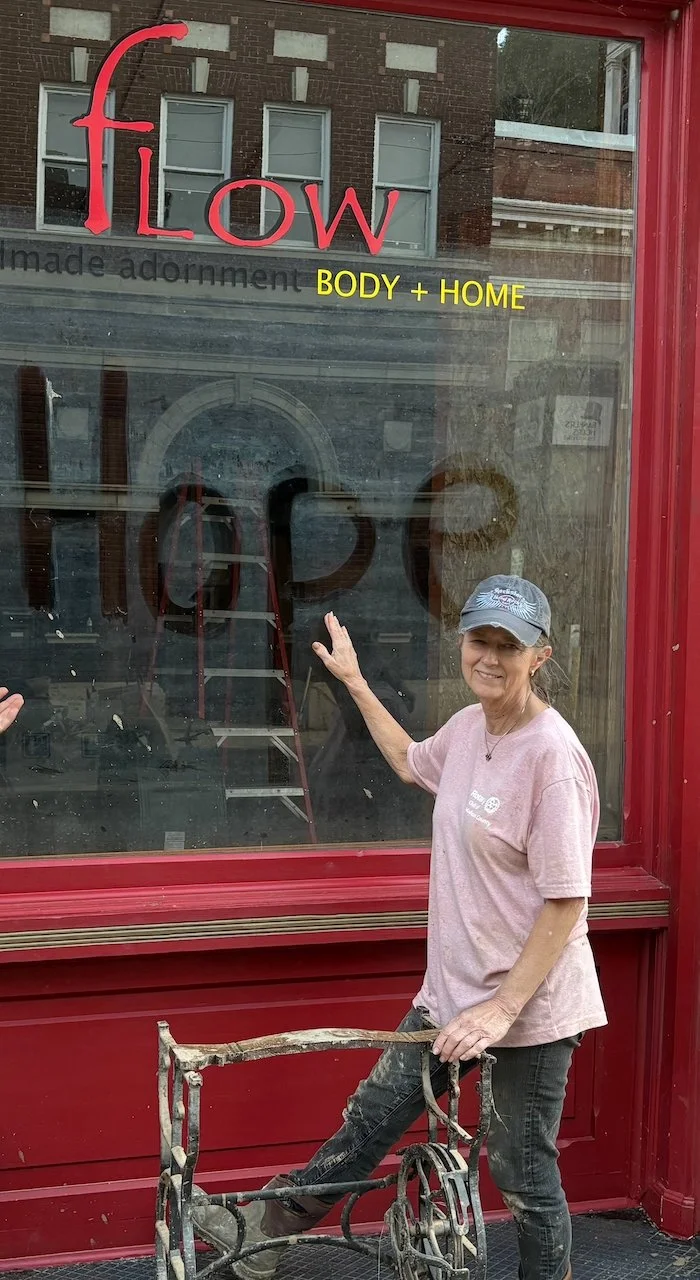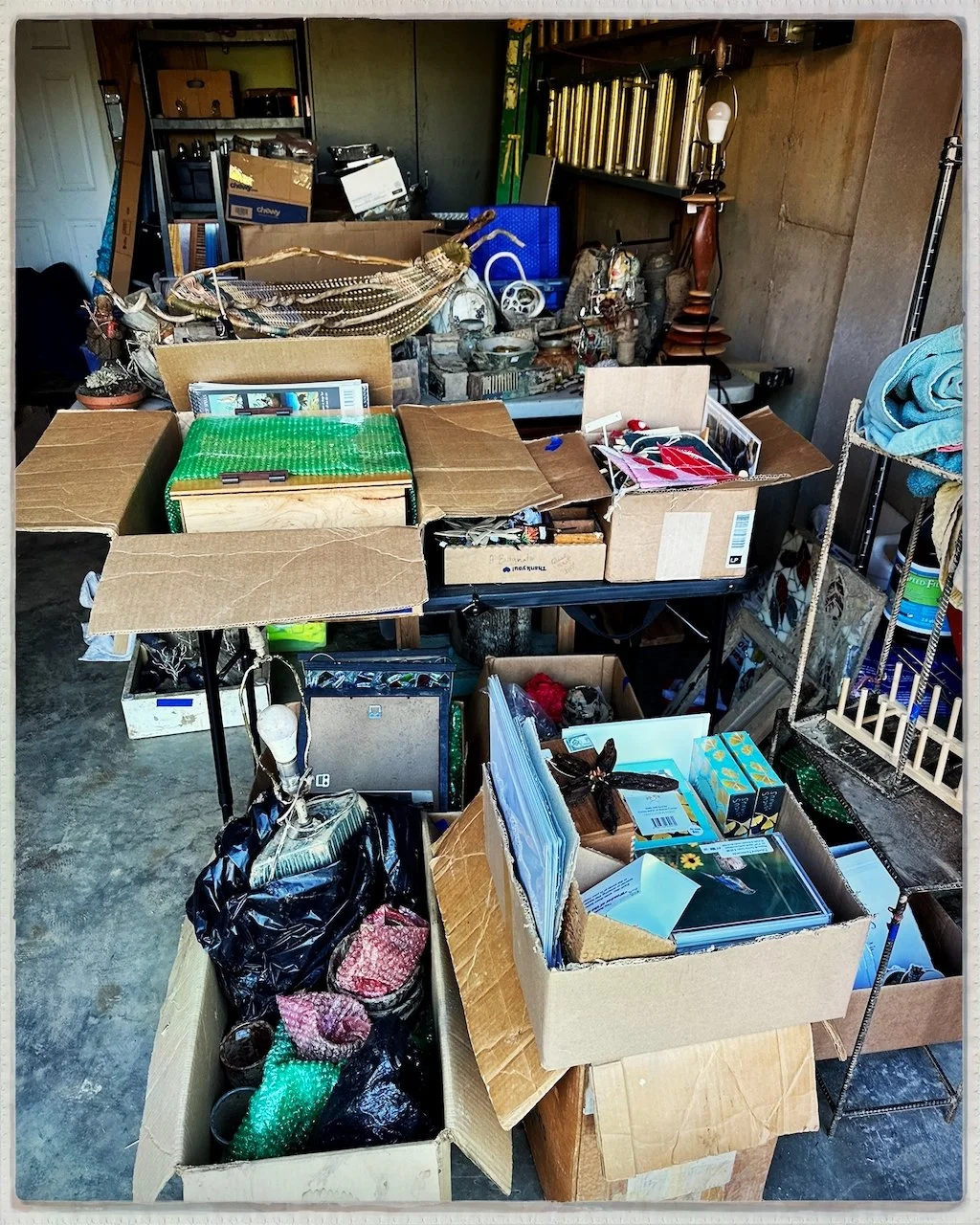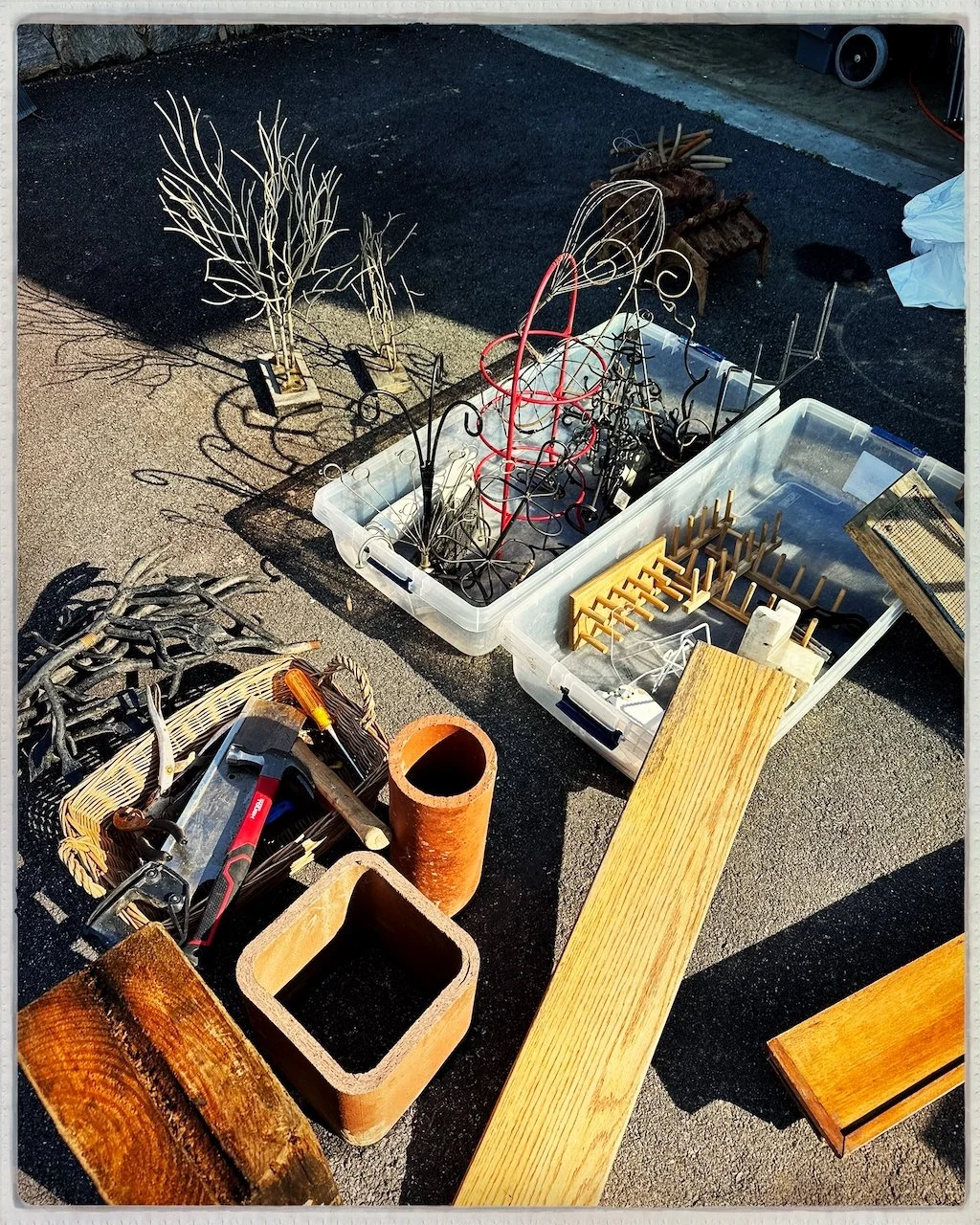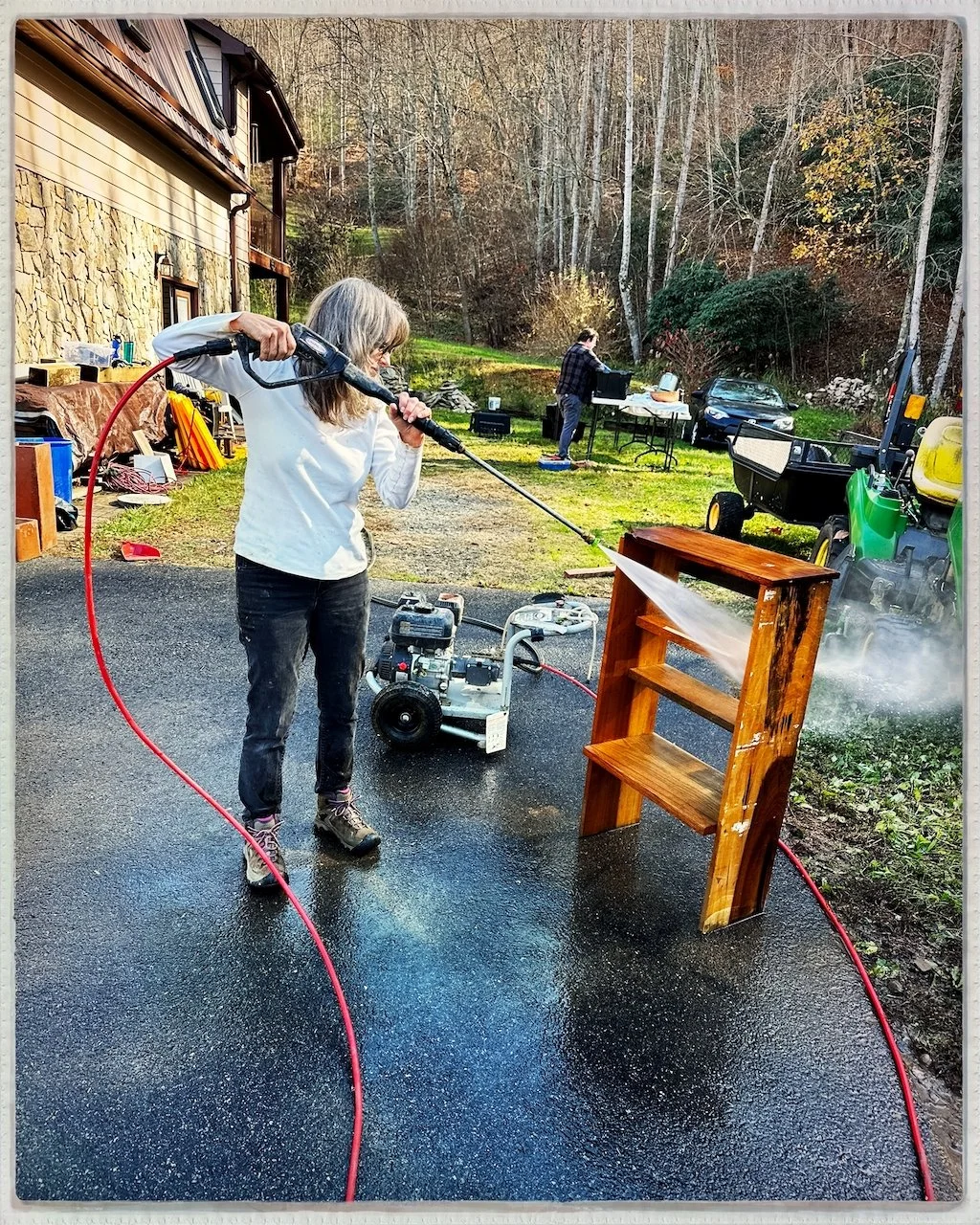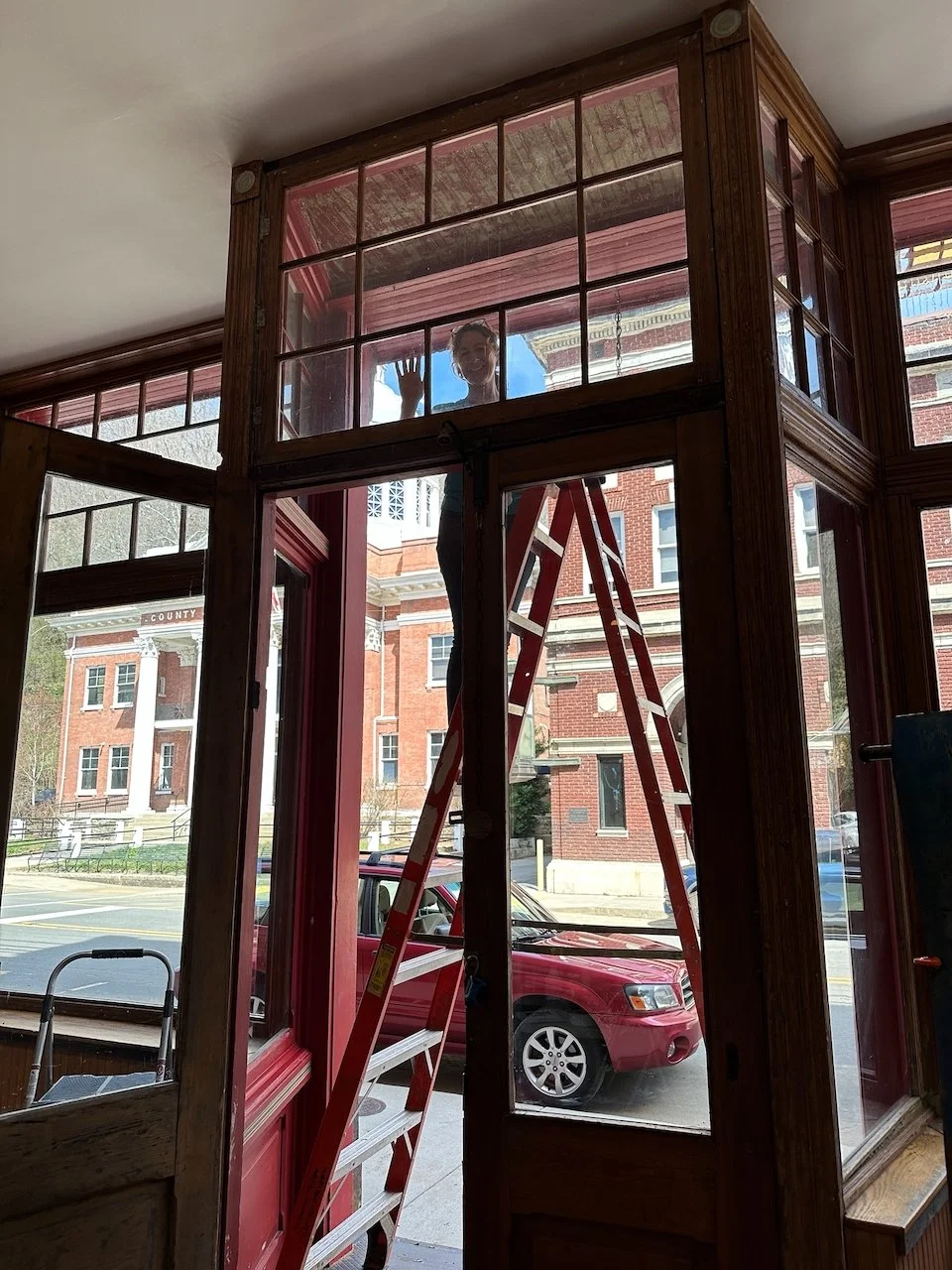News
Thursday, September 26, 2024, Flow owners heeded the warnings of a potential flood in town. We removed all of the electronics, jewelry (because we were afraid of looters!), and fiber work. Anything that was 4’ or below, was moved up to the top of the bathroom ceiling which is about 96” high. We put sandbags up against our doors (which in hindsight was silly because the doors swing inwards!) and we left about 5pm hoping it wouldn’t be so bad. Blannahassett Island, located in the middle of the French Broad River in downtown Marshall, had already started to flood, but that was something our town had seen several times over the years. But this felt different.
On September 27, 2024, Hurricane Helene hit Western North Carolina and the French Broad River flooded downtown Marshall. Prior to the storm, there were roughly 75 buildings in the central business district. Ten buildings were swept away and eight buildings sustained significant structural damage.
The center of town where the courthouse stands, is the highest point in town. Flow Gallery is across the street from the courthouse and we ended up with 87” of water inside of our building. After the floodwaters receded, we had about 8” of mud that covered the floor and all of the furniture and product that was still in the building.
Within 48 hours, swarms of volunteers, business, and building owners started showing up. Some had shovels in their hands, some wore protective gear, some just had their bare hands, but all had a willingness to do whatever was asked of them. With absolutely no experience with a disaster like what we were facing, we set to work pulling out the work, display furniture, and throwing out anything that was damaged or destroyed. We had to “muck and gut” which is a new term for those of us not familiar with the aftermath of a flood. This meant we had to get all of the mud out of the building, and then we had to remove the drywall and insulation to one foot above the water line. We had to power wash, and power wash, and power wash in side the building……and then power wash again! The mud took forever to remove. The volunteers – some who are regular customers and many total strangers – kept coming to help, day after day after day. When the work seemed to overwhelm us, the volunteers would innocently ask what time we were going to start the next day which gave us the energy needed to continue the work.
For many weeks, the noise of heavy equipment - track hoes, back hoes, skid steers, and dump trucks - was constant as tons (and tons) of debris was removed. The County landfill took in more debris in a two-week period than they normally do over the course of two years! Then the sounds of generators and power washers filled the air every day, all day. Giant fans were running 24/7 to air out buildings.
The work that we did prior to the storm paid off and after carefully inventorying all of the artwork and comparing the artist’s product with the artist inventory sheets, we estimate that we saved about 70% of our artist’s work! Many display pieces and display furniture did not survive the flood nor did any of our “back room” items such as our all of our tools, our refrigerator, microwave, vacuum cleaner, and cabinets.
We applied for many grants – some were relatively easy applications, others were intense. While a lot were denied, we were fortunate to receive some of the grants we applied for. And we are pleased to share that the first one that we got, we used that money to pay our artists for their work that was lost, damaged, or destroyed. We consider ourselves a family of artists and we wanted to make our family “whole” before spending any money on rebuilding our shop. We also put together an Amazon Wishlist which was a GREAT success where people bought items that we needed for the shop. This included simple things like scissors and tape for the desk, to expensive things like a vacuum cleaner and a refrigerator.
It took six months for us to reopen…..and we were business number six to reopen in town. We will forever be grateful to the volunteers, the heavy equipment operators, the donors, to the town of Marshall, to our artists, and to our landlord for the amazing financial, physical, and emotional support we received. We could not have recovered without this help.
Thank you for reading our story.
